By now you’ve no doubt heard about President Joe Biden’s interview with “60 Minutes” in which he declared the pandemic “over” and said unequivocally that, “yes,” the United States will come to Taiwan’s defense whenever China attacks. He also made some dubious claims about inflation.
When CBS interviewer Scott Pelley highlighted the abysmal state of the economy and noted that “people are shocked by their grocery bills,” Biden sputtered that the “inflation rate month to month was up just an inch, hardly at all.” To give you a flavor of the rest of the exchange:
Biden: [You guys] make it sound like, all of a sudden, ‘My God, it went to 8.2 percent.’
Pelley: It’s the highest inflation rate, Mr. President, in 40 years.
Biden: I got that. But guess what we are. We’re in a position where for the last several months, it hasn’t spiked. It has just barely — it’s been basically even.
It’s worth clarifying what Biden is trying to claim here. The inflation rate clocked in at 8.3 percent in August, after registering at 8.5 percent in July and 9.1 percent in June. When the president says inflation “hasn’t spiked” and has “been basically even,” he’s talking about these fractional changes — and he’s hoping you don’t know what they mean and that his lapdogs in the corporate media won’t explain them to you.
But when we’re talking about inflation and how it affects prices, the baseline isn’t some-odd 8 percent or whatever the rate happened to be last month. In other words, we don’t measure August’s inflation as down 0.2 percentage points from July and 0.8 points from June. These monthly figures represent year-over-year changes, meaning each report describes how prices that month compare to prices at the same time last year — and they’re all up, by a lot.
To that end, I suppose it’s accurate to say that month-to-month, inflation “hasn’t spiked” — but that just means inflation has been consistently bad under this administration. But the goal obviously isn’t to keep inflation “basically even” at a 40-year high; it’s to bring it the heck down.
But even these overall 8 and 9 percent figures are misleading — and dramatically under the money — for essential needs such as energy and food. As Pelley said, Americans are “shocked” every time they go to the grocery store.
But just how bad is it? Do grocery increases really amount to just 8 percent, or a few cents, per item? Are prices up, as Biden claimed, “hardly at all”?
I went to the grocery store and ran some numbers, and I too was shocked by what I found.
Midterm to Midterm
I stopped by one of the nearest grocery chains, which isn’t as cheap as Aldi but is no Harris Teeter highway robbery either. I’d say it’s comparable to a nice Pick ‘N Save, with a few brand options for each item.
While doing some personal shopping, I took inventory of basic items (universal brands if the store had them), some of which were “on sale.” I documented each item’s regular price. Then, using data from the U.S. Bureau of Labor Statistics (BLS), I cross-referenced those prices with grocery costs during a comparable time in recent memory: the last midterms in 2018 under President Donald Trump — a year and a half into the presidency and during a time of strong political incentives to keep Americans happy.
I avoided produce, most of which the BLS doesn’t keep consistent records for and which has such a short shelf-life that prices vary widely. I did, however, check in on other essentials across a variety of categories: baking items such as flour and sugar, meat, eggs, cheese, and other staples such as bread and pasta. And let’s just say after running the numbers, an 8 percent increase would have been welcomed. The real hikes were insane.
Milk, Eggs, and Bacon
Let’s start with breakfast, as you do. In September 2018, bacon cost $5.50 per pound, according to BLS averages. Today, those delicious piggy strips will run you about $7.99 per pound for your run-of-the-mill brand.
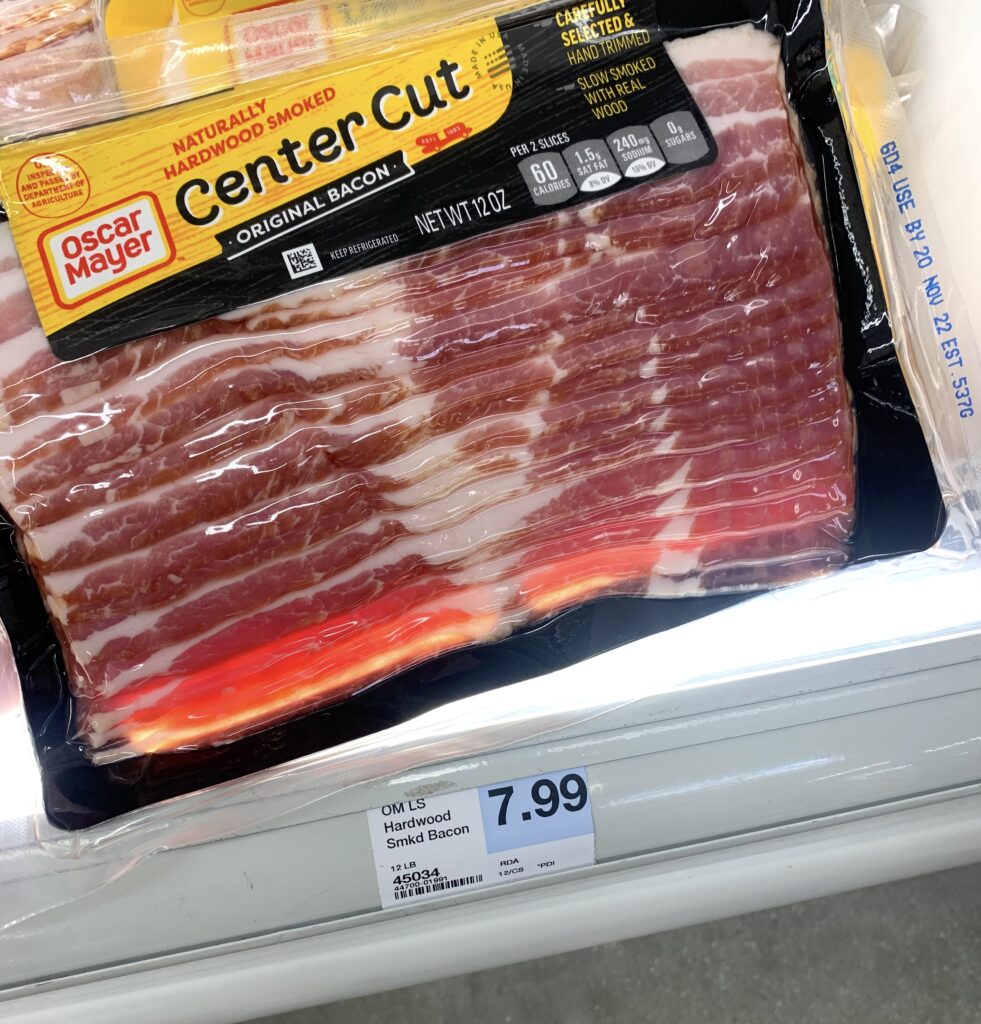
That’s a 45 percent price jump, almost all of which occurred after Biden took office.
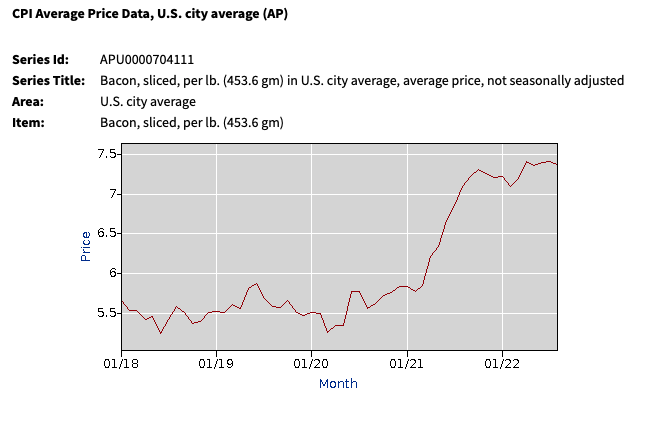
Milk is even worse. In 2018, one gallon of whole milk cost $2.98. Now, the grocery store’s off-brand milk costs $4.89, a price increase of almost 70 percent.
Milk is an input into multiple other foods, such as cheese, sour cream, cream for your morning coffee, and more. So when milk goes up, it has a big effect on the prices of many other edibles.
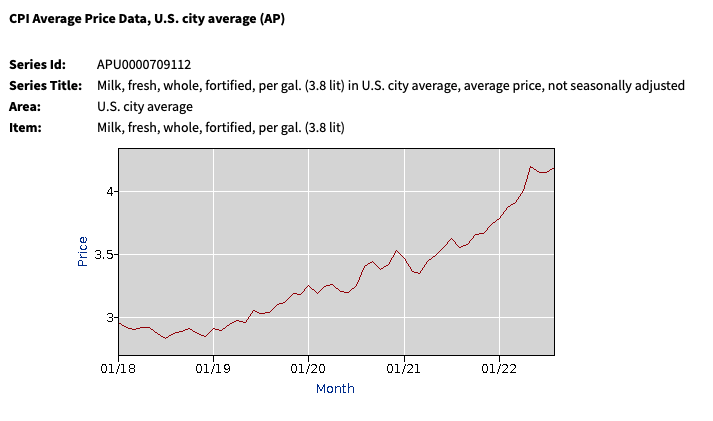
The other two non-specialty brands available, both Midwest-specific, cost $4.99 per gallon and a whopping $5.39. The latter was the last one on the shelf, an all-too-familiar sight in Biden’s America.
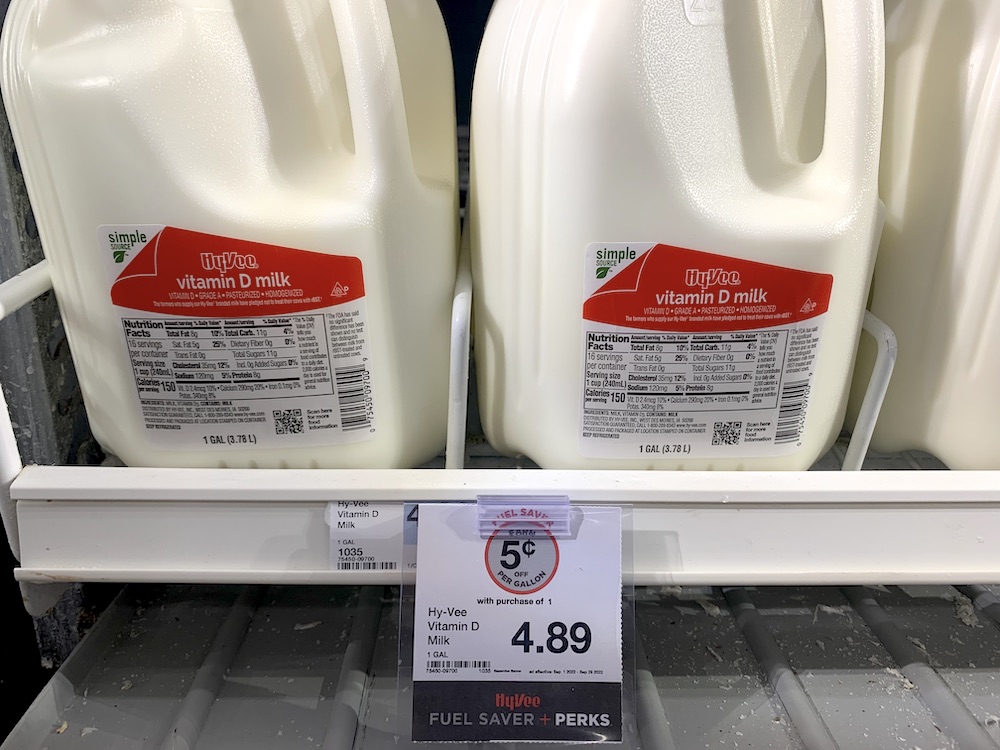
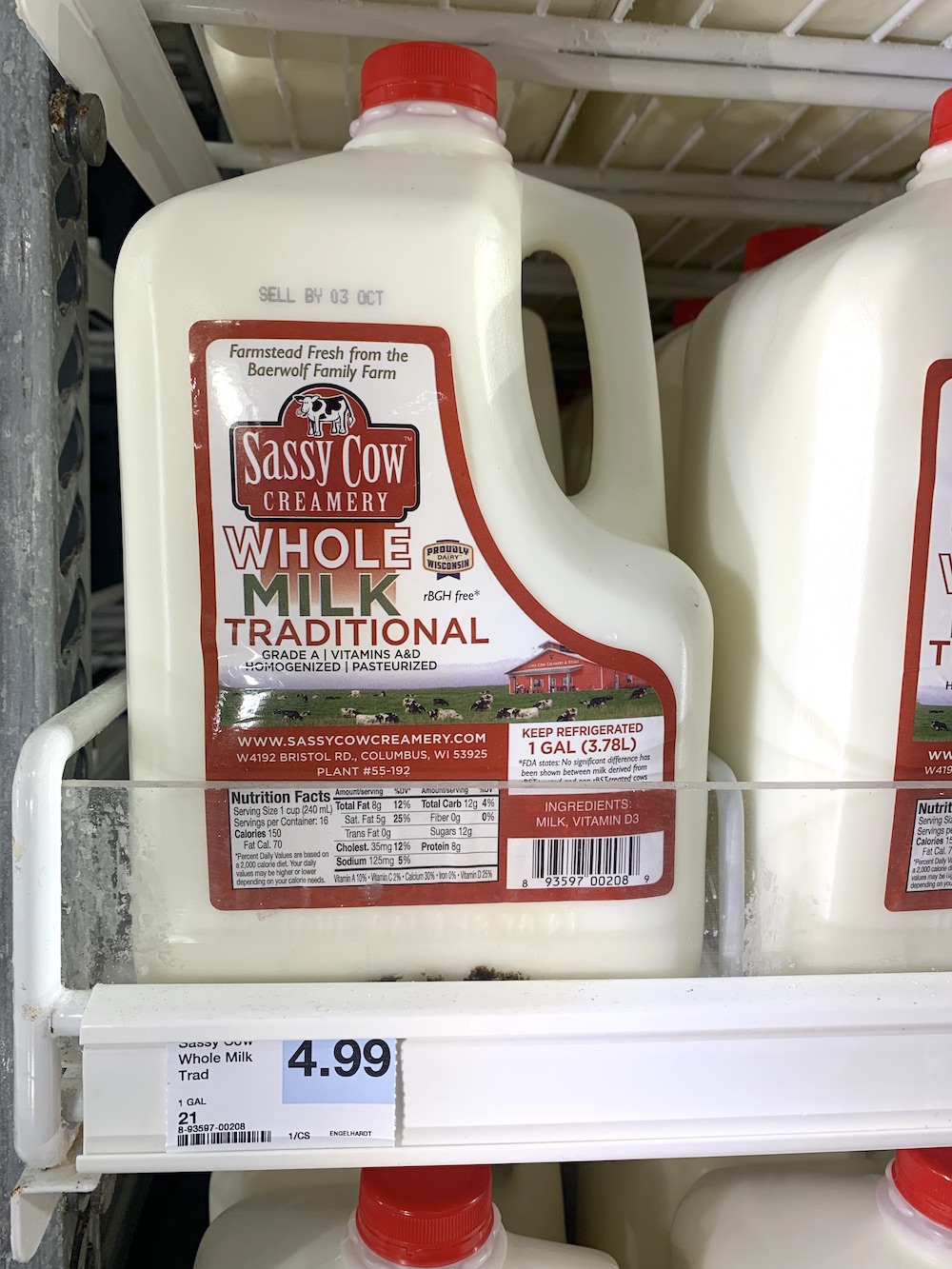
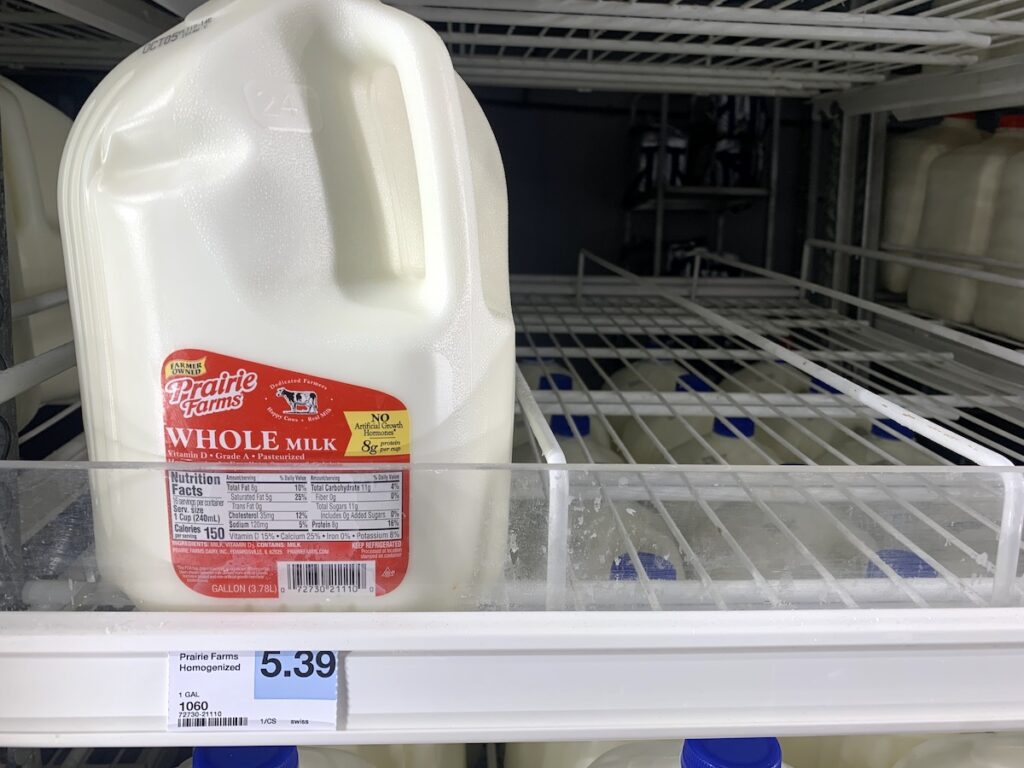
Eggs are some of the worst offenders of all. Americans paid $1.65 for a dozen of Grade A, large eggs in 2018. Now, those eggs cost $3.49 for 12.
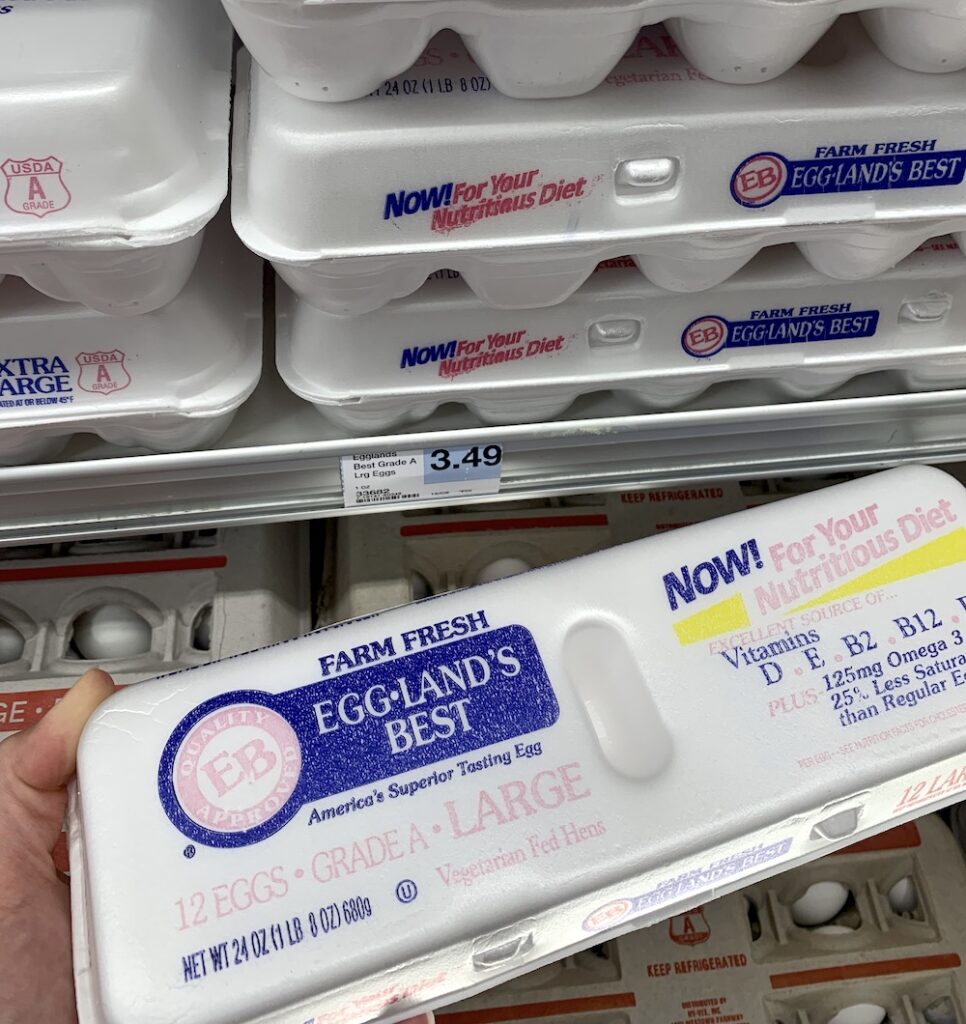
I’ll spare you the math. That’s a nearly 112 percent spike that’s coincided with the current president’s time in office. The cost has more than doubled.
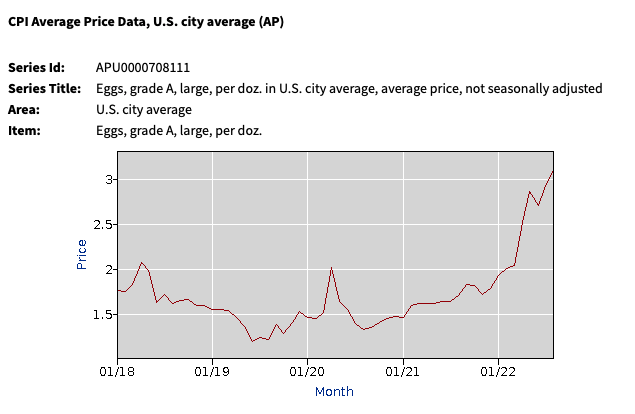
Pasta, Bread, and Baking
Bread and pasta used to be reliably inexpensive staples of the American diet. It’s why go-to meals for lower-income families often include PB&Js for lunch and spaghetti for dinner. But they’re not so inexpensive anymore.
Wheat bread in 2018 cost $1.95 per pound. Now it costs $3.19, a 64 percent rise.
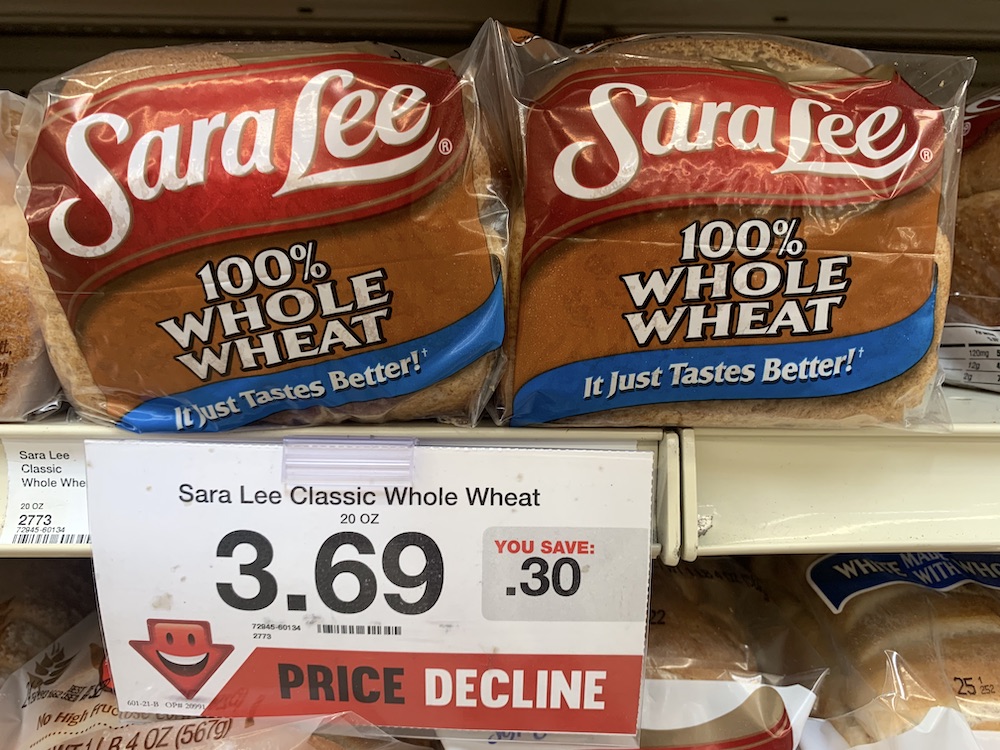
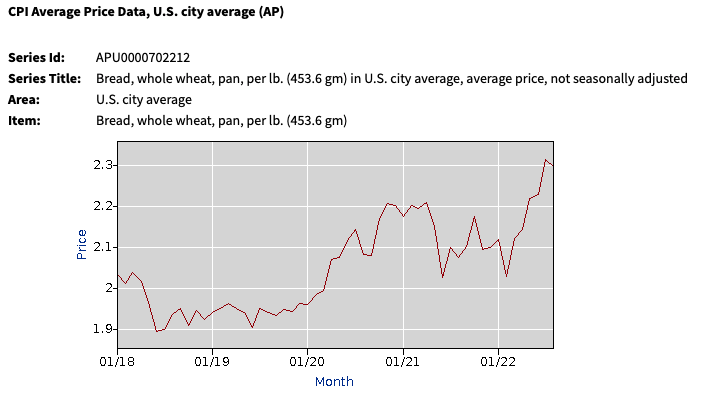
The cost of white bread has skyrocketed. Four years ago, it ran consumers just $1.29 per pound. Today it’s $2.79. That’s a 116 percent spike.
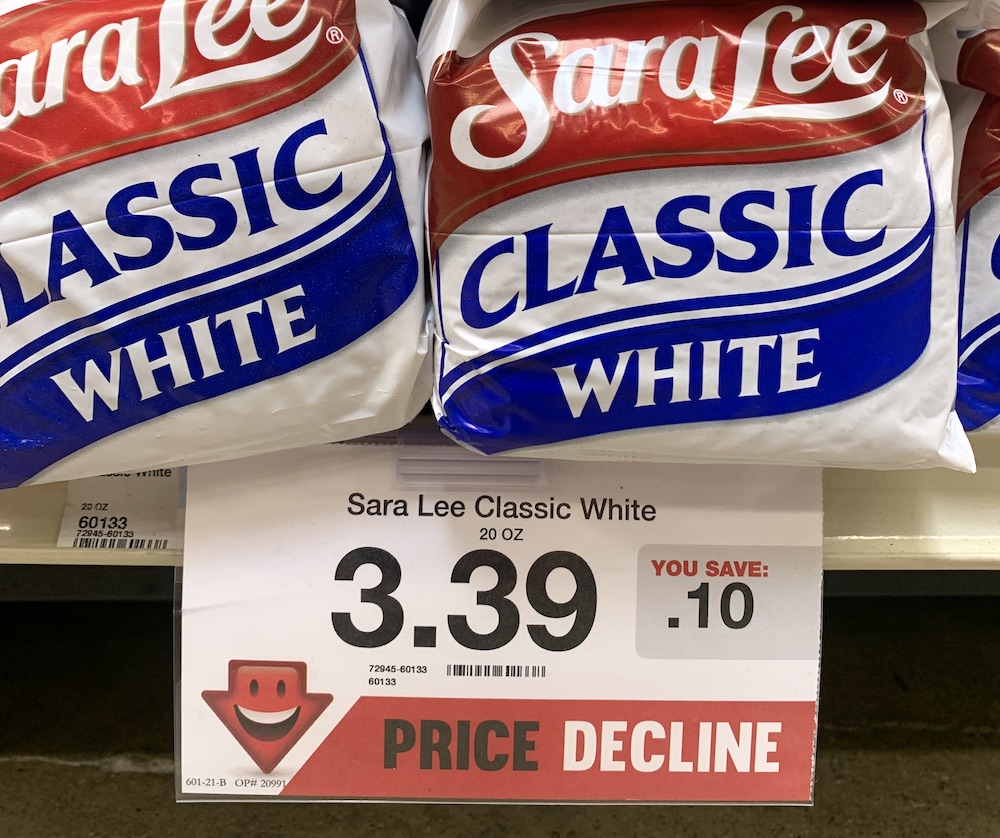
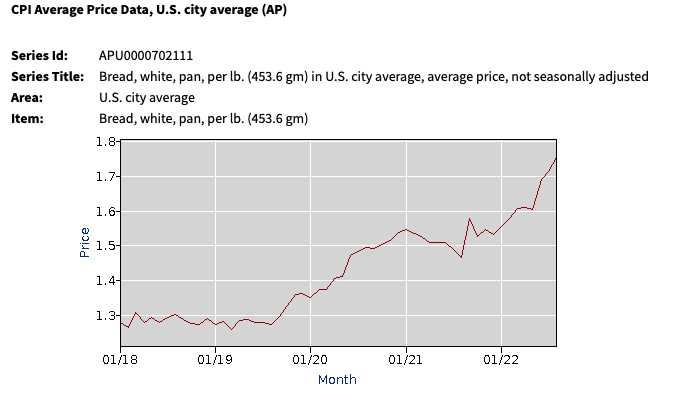
And while the price of spaghetti in September 2018 was $1.20 per pound, America’s go-to pasta now costs $1.84, meaning it’s risen in price by more than half.
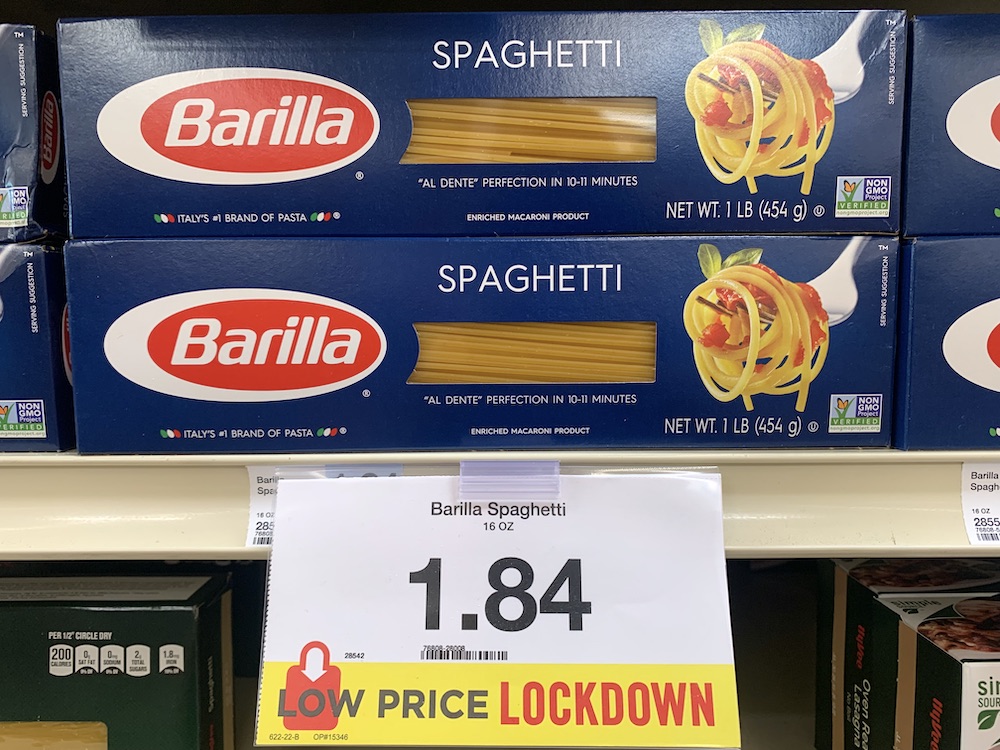
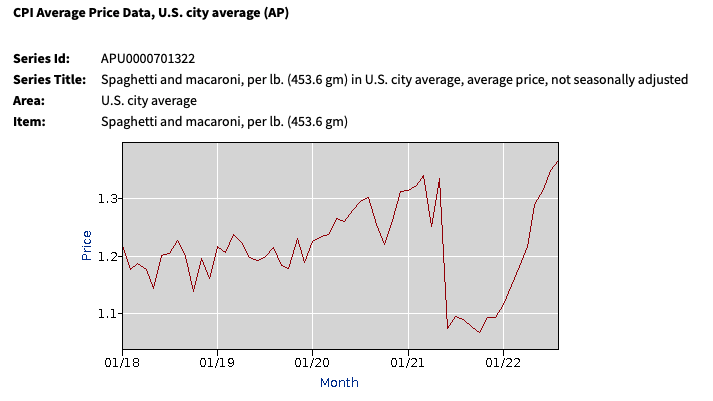
Speaking of rising by half, that’s also what’s happened to the price of sugar. Four years ago, it cost just 58 cents per pound. Now it costs 87.
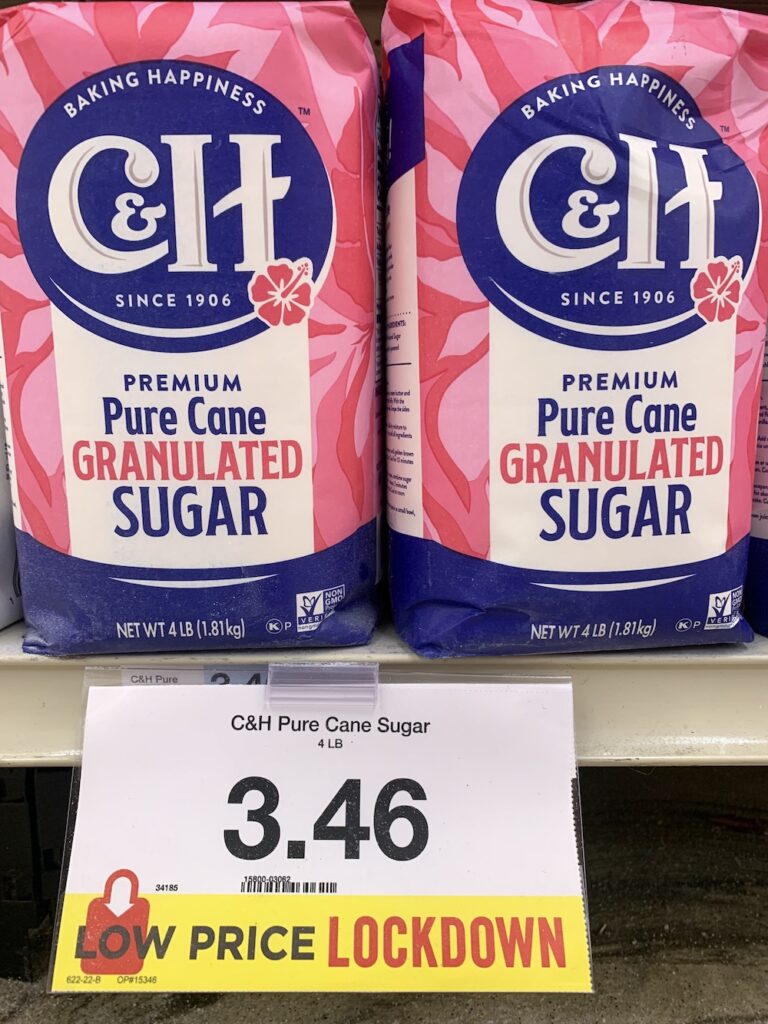
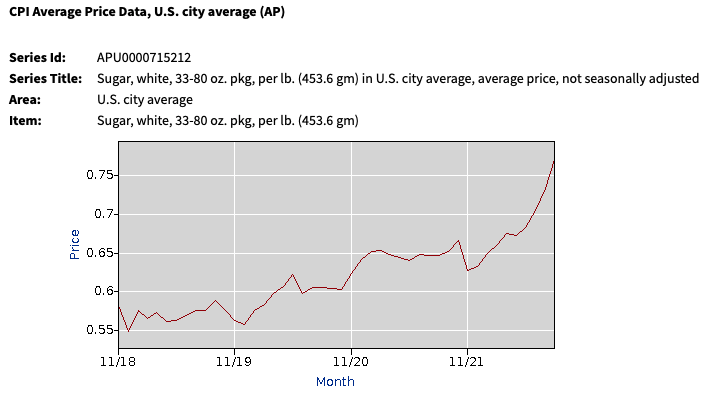
Flour is even worse, with a 70 percent increase. In 2018 it cost an average of 47 cents per pound, and today it costs 80.
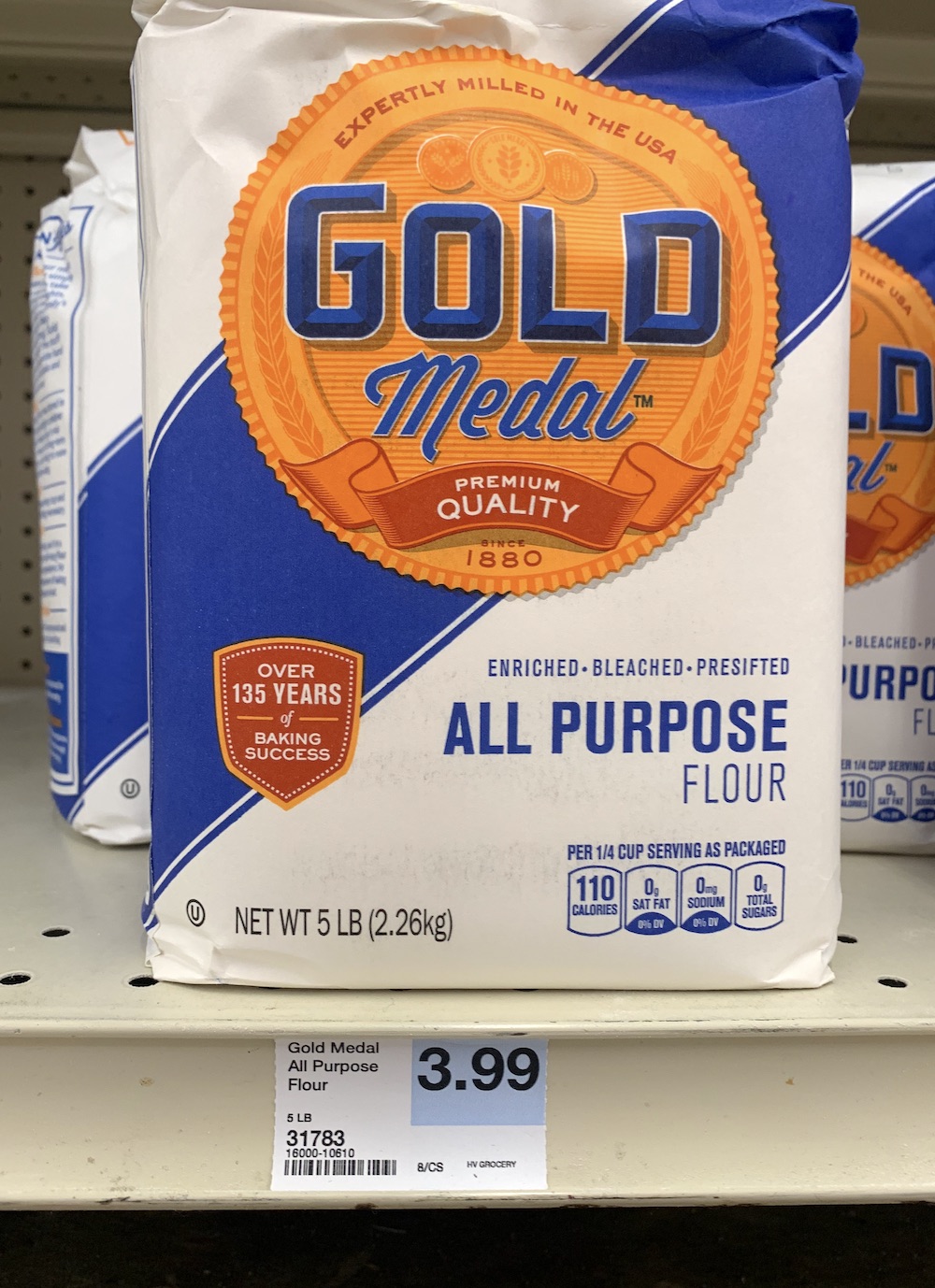
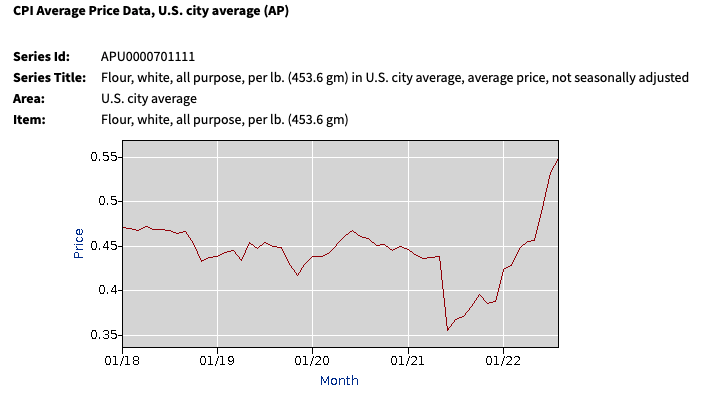
Meat and Cheese
A consistent complaint among Americans is the cost of meat, and it’s easy to see why. Prices are up considerably for some of consumers’ most reliable protein sources.
Chicken breasts cost an average of $2.90 per pound during the Trump midterm era. During Biden’s midterm season, they are running at $4.99 per pound. That’s a 72 percent increase for what was arguably one of the most basic, versatile, and affordable of poultry proteins. The upward trend started about the same time the Biden administration took the reins of the U.S. economy.
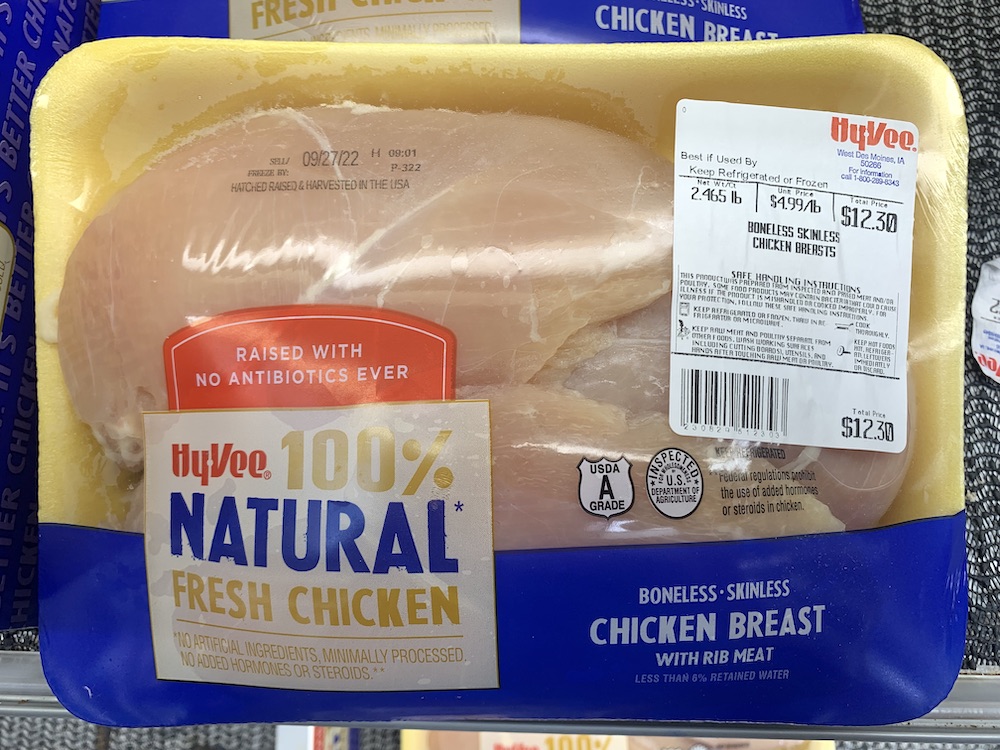
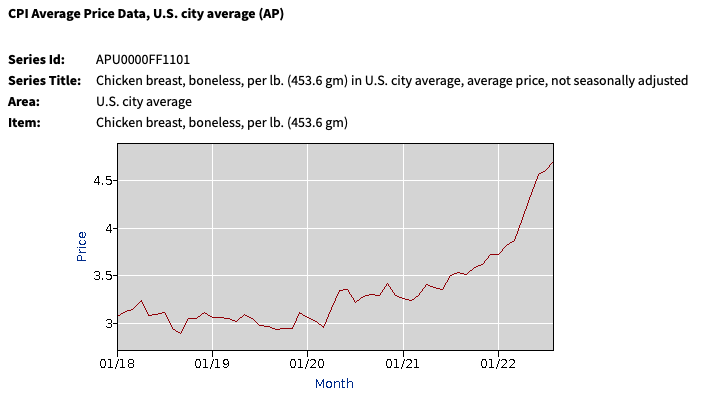
Ground beef, another staple, is up from $3.74 per pound in 2018 to a staggering $6.29 per pound now. No, that’s not for organic. It’s a good thing the summer season is coming to a close, because those cookouts were getting painfully expensive — 68 percent more expensive for the burgers than just a few years ago.
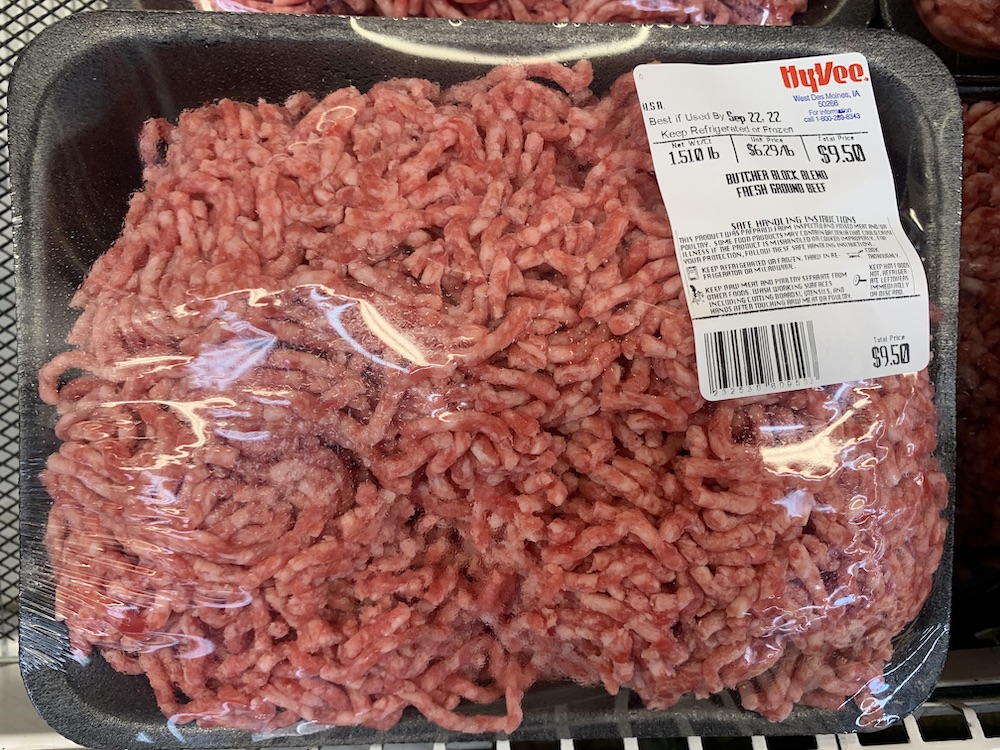
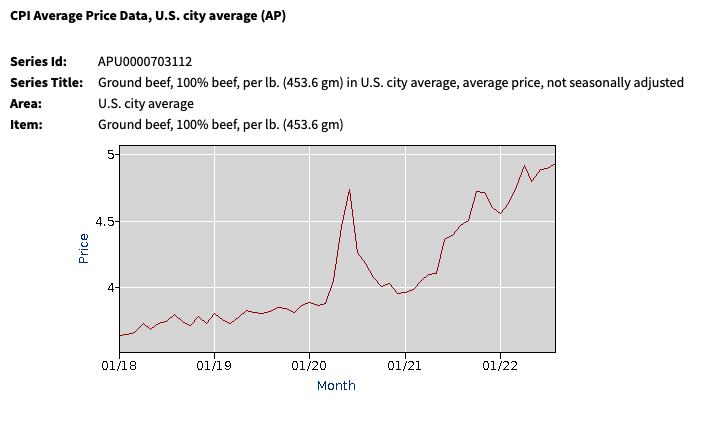
The cheese for the top of those burgers went up a bit too. While cheddar cheese ran about $5.13 per pound in 2018, it’s up to about $6.00 now, for a nearly 17 percent rise.

Cravings
Junk food isn’t exempt from Biden’s inflation, either, so if you’ve got a salty craving, expect to pay more to satisfy it — at least twice as much, actually.
In September 2018, potato chips were $4.43 for 16 ounces. Now they cost more than that for a regular price 8-ounce bag.
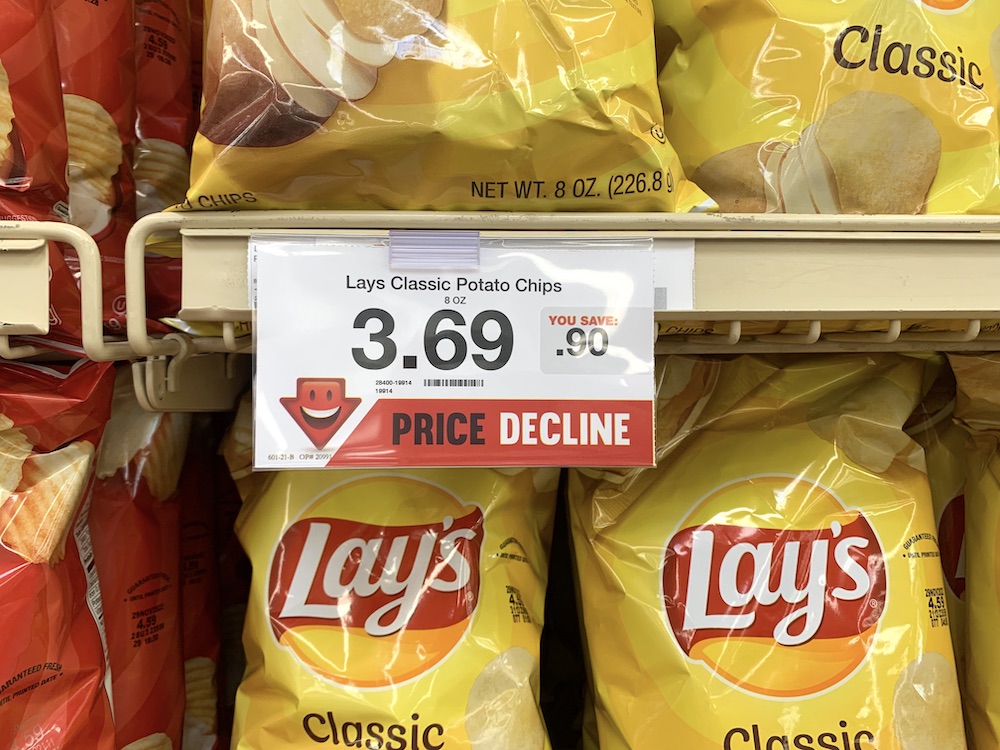
That means today potato chips are $9.18 for 16 ounces at my grocery store, a 107 percent jump for the simple pleasure.
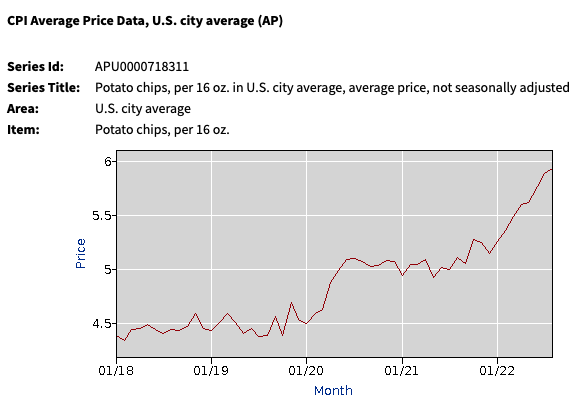
So … ‘Hardly at All’?
This is a lot of figures to make sense of, but it’s safe to say a single-digit inflation rate doesn’t capture it, and you definitely wouldn’t describe the prices as up “barely an inch.” In fact, among these basic items in my shopping survey, prices were up an overall average of 70 percent since just the Trump midterms!
Of course, it should go without saying that groceries in some parts of the country will be cheaper than in the Midwest city where I live, while others will be more expensive. And of course, consumers can sometimes find more affordable off-brands than some of the above, just as they could find brands that are much spendier. But these 2018 BLS statistics are “U.S. city average[s],” meaning it’s fair and accurate to compare them to mid-tier brands in this American city in 2022 — and the comparison is damning.
The left-wing media and Biden apologists will retort that prices are the fault of a virus or Vladimir Putin or malicious corporations, but the administration’s reckless fiscal policies speak for themselves. And it isn’t as though other presidents don’t have to contend with geopolitical forces or crises outside their control. When Trump was in office, everything from an airborne virus to Twitter spats was his fault. Now that Biden is commander in chief, it’s only right that the direct consequences of his policy failures be laid at his feet.
So consider this a fact-check. Biden’s claim that inflation is up “hardly at all” deserves pants-on-fire status and all the Pinocchios. But Americans don’t require a fact-check. They just got home from the grocery store, and they’re shocked at what they see.









